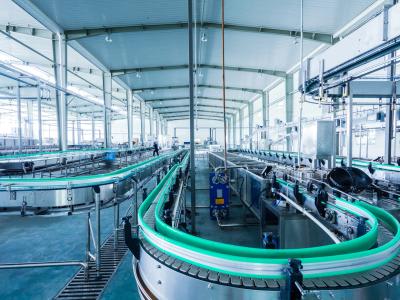Calculating GST turnover for the JobKeeper Payment scheme
One of the critical aspects for an employer to consider and satisfy as part of the JobKeeper Payment Scheme is whether it has satisfied the decline in turnover test.
What is clear from the Treasurer’s JobKeeper Rules, and associated guidance is that the entity will need to satisfy the minimum decline in turnover of 15%, 30% or 50%, as relevant (depending on the type and aggregated turnover of the entity). 
However, what is less clear and causing considerable angst for taxpayers and advisers alike is on what basis – cash or accruals – the current GST turnover for the comparison period and the projected GST turnover need to be calculated.
For GST and business activity statement (BAS) reporting purposes, an entity will account for GST either on a cash basis or on accruals basis. Subject to a few exceptions, entities with an annual turnover of $10m or more are required to use an accruals basis, whereas entities with annual turnover less than $10m can choose either a cash or accruals basis. If we were relying only on common sense, the expectation would be that an entity would calculate its GST turnover (whether current or projected) for JobKeeper purposes using the same basis as it does for GST and BAS reporting purposes. Sadly, tax law is built on a foundation of unnecessary complexity rather than common sense.
Under the GST Act, in order to determine its current or projected GST turnover, an entity must calculate all of the supplies it has made or is likely to make in the relevant period. The JobKeeper Rules adopt the same test when requiring an entity to calculate its current GST turnover (for the comparison period) and the projected GST turnover (for the test period). Unlike other countries, Australia does not have “time of supply” rules which determine the exact month or quarter of when a supply is made. Instead, the GST Act simply determines the month or quarter in which the GST on a taxable supply needs to be reported on a BAS and attributed to the Australian Taxation Office (ATO).
Given the absence of any time of supply rules, there is a degree of confusion between when supply has been made and when the GST on that supply needs to be attributed to a BAS.
Take, for example, the sale of goods from Entity A (which has monthly BASs) to Entity B for $1,100 where:
- Entity A issued the invoice to Entity B for the goods on 31 March 2020;
- Entity B made full payment to Entity A for the goods on 30 April 2020; and
- Entity B took title and possession of the goods on 7 May 2020.
While Entity A would remit the GST on the sale of the goods in either its March 2020 BAS (if on an accruals basis) or its April 2020 BAS (if on a cash basis), there is an argument that supply of the goods was made in May 2020 as that is the month when Entity B’s use and enjoyment of the goods would commence.
RELATED-
A guide to JobKeeper Payment coronavirus stimulus:
Eligibility calculation for the basic decline in turnover test.
Calculate JobKeeper Payment for employers and employees > 
The ATO appears to be aware of this disconnect between when a supply is made for GST turnover purposes and when the GST on supply is attributed for BAS reporting purposes by allowing taxpayers to use either a cash or accruals basis for JobKeeper purposes regardless of what GST reporting basis they may normally use.
 This concession, contained in the ATO’s turnover test guidance, is caveated by the statement that, as a practical matter, the ATO expects that taxpayers will use the GST reporting method that it normally uses for its JobKeeper turnover calculations. The ATO notes that, if a taxpayer normally accounts for GST on an accruals basis but calculates its JobKeeper turnover on a cash basis (or vice versa), the ATO may seek to understand why the calculation achieves an appropriate reflection of the taxpayer’s turnover.
This concession, contained in the ATO’s turnover test guidance, is caveated by the statement that, as a practical matter, the ATO expects that taxpayers will use the GST reporting method that it normally uses for its JobKeeper turnover calculations. The ATO notes that, if a taxpayer normally accounts for GST on an accruals basis but calculates its JobKeeper turnover on a cash basis (or vice versa), the ATO may seek to understand why the calculation achieves an appropriate reflection of the taxpayer’s turnover.
It follows from the ATO’s position, which continues to evolve, that a JobKeeper claim calculated using a different basis to the entity’s usual GST reporting may be acceptable but poses a higher level of risk and will be subject to greater scrutiny than a claim using a consistent BAS / JobKeeper approach. However, anecdotal evidence suggests that for some taxpayers, taking a different approach could mean the difference between being eligible for the entirety of the JobKeeper Payment scheme or not being eligible at all. As such, taxpayers will need to give serious weight to undertaking separate turnover calculations using both a cash or accruals basis provided, of course, the calculations and all underlying assumptions around reasonableness are fully documented and contained in a robust position paper.
One final observation is that the ATO’s practical approach around being able to use either cash or accruals for JobKeeper purposes does not actually answer the question of when a supply is made or likely to be made per the definition of GST turnover.
In the earlier example of Entity A selling goods to Entity B, under either a cash or accruals basis, the answer could never be May 2020, even though that was the month in which the physical delivery of the goods took place.
There is a school of thought that suggests that concepts such as revenue recognition from accounting standards or management accounting estimates could be relevant to determining when a supply is made or likely to be made. However, absent any ATO guidance on this point, taking such an approach for JobKeeper purposes could be a risky proposition.
For more information
If you require further information or have any questions regarding the JobKeeper payment scheme, contact your local adviser today.




